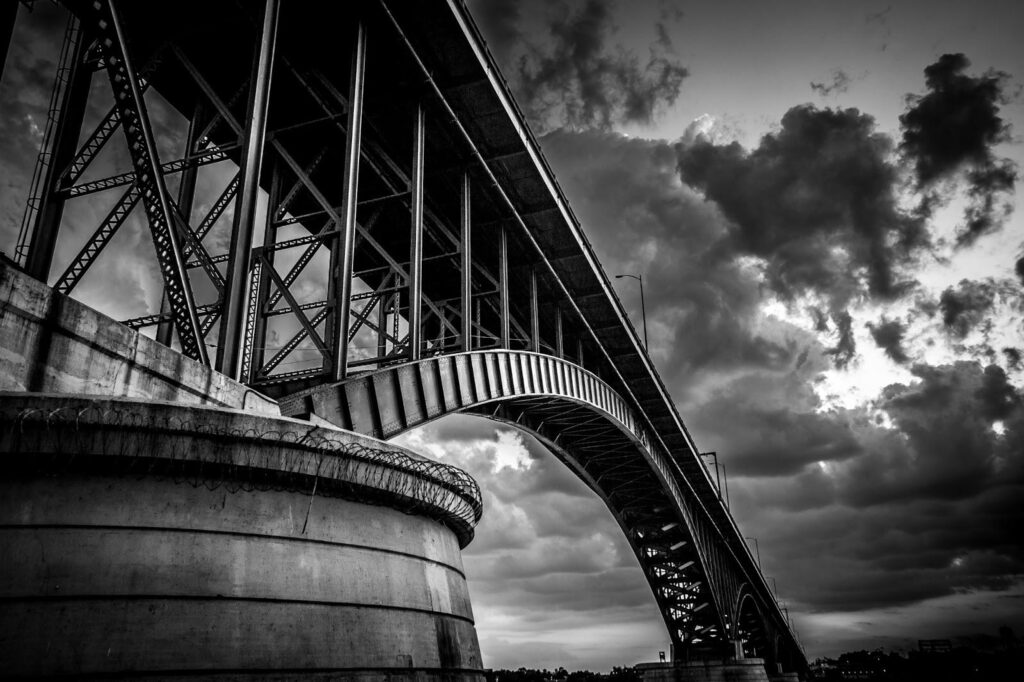A few steps on the Underground Railroad
We humans are narrative creatures, at least I am. Dates, map locations, legislative facts: history can be hard to remember piece by piece. A vivid scene, though, sticks in the memory.
A man on the verge of gaining freedom after traveling hundreds of miles on foot looks over a bridge from Buffalo into Canada with hope in his heart.
A woman refuses to answer an obnoxious white reporter’s questions. Her simple, resounding, “No” preserves the personal autonomy she’s attained along with bodily freedom in the north.
These two fictional moments, along with many others, illuminate the history of the underground railroad in New York state. They are part of Voices on the Underground Railroad, a collection of stories created by Cornell students and read aloud by members of Ithaca’s Civic Ensemble.
In a seminar taught by professor Gerard Aching, students learn about documented and rumored underground railroad stations and safe houses – homes, a church a mansion, a ferry dock. The students then write stories mapped onto the historical places to bring this history to life in a critical way.
I visited the class in November to talk about the power of a story to immerse us in an experience.
The nine stories posted on Voices on the Underground Railroad were composed by a class in 2020. The current students’ final project is to write and produce a new set of narratives. When I visited the class, they were in the drafting stages of writing historical fiction.
We talked about:
—The power of historical fiction: Why can a narrative bring us closer to understanding a period or event than straight facts?
—The problems of historical fiction, including who can access or re-imagine which stories? How can a writer approach an experience vastly different than her own?
—Best practices of fiction writing: tactile details, conflicts both large and small, and lively dialogue will enhance these historical narratives.
Now that you’ve studied the underground railroad, I asked the students, what misconceptions to you find in the world? The ensuing discussion was illuminating. “People think there are actual tunnels,” someone said.
Another pointed out that racial injustice has not vanished post-slavery but continues to limit peoples’ freedom with poverty, mass incarceration and other disparities.
Professor Aching complicated the bondage/freedom narrative with a term from Frederick Douglass, “the tender point.” The greatest threat to an enslaved person’s freedom quest might not be external — a bounty hunter or a slave master — but love for a person or a community.
“These narratives should not be considered actual testimonies,” the Voices website says. “Instead, they are a sincere attempt to inhabit and explore the lived experience of freedom seekers — their fear and resilience in transit to a new life. These fictionalized voices–honed after careful study of the classic slave narratives and the history of the underground railroad–permit us to imagine the thoughts and experiences of freedom seekers on their paths to liberation.”
Voices on the Underground Railroad is a brilliant project, essential for teaching a history that has not stopped playing out in the present, and won’t until Americans reach a greater understanding of the injustices woven into the founding of our country.
I don’t know which bridge freedom seekers crossed to get into Canada – the Esperanza Mansion story doesn’t say. But I have crossed the Peace Bridge from Buffalo, NY to Fort Erie, Ontario (opened in 1927) on foot. “Even though the other side of the bridge didn’t look any different from this side,” Peter, the man in the story, says, “I knew that a new life in freedom was about to begin.”
Through the power of historical fiction, another person’s experience is laid over my own. I know what he’s talking about in the first half of this observation – it really does look the same on both sides, even though it’s two countries offering two different possibilities. And I can follow my heart to inch closer to understanding the second.
